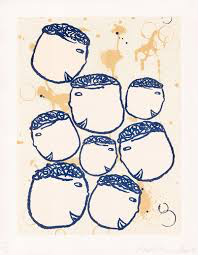I was thinking this morning while practicing the piano about just why some people are more of an artist than a scientist though both are equally are highly esteemed in my mind. They say it has to do with right vs left brain but even that seems almost too abstract, too irrelevant an explanation.
I was thinking about it because in this Post-Modern academic world-view an artist is expected ‘to say something’, to comment from their own perspective, to assert a point of view about something. But for someone, a painter in my case, who simply desires to see Nature out in the world away from self or point of view, it can be a letdown for the viewer who expects this ‘discussion’ about Nature, either as an interrogation or affirmation. But for the painter (me) who is not generally interested in this kind of dialogue using Art, there is no other purpose to the work of art than to behold it, to be swept away by its expression of personal truth. The meaning of it is in the transfer of a feeling from one person to another.
So a painter, in this long vertiginous line of landscape painting; in the West, the East, and in the wild worlds of Africa and beyond, I am loathe to question or affirm ideas that I might have about the Natural world, rather, it is my wish to simply express it visually. And as a painter I desire more than anything to run naked into the motif, exploring it fully, like a teenager kissing their first beau, or belle, for the very first time.
A scientist, on the other hand, wants to poke it, turn it over, and open it up like a frog's heart or a new thesis. It's a different exploration, and it gives up different results. The scientist seeks an understanding of Nature through facts whilst the painter seeks out an artistic solution to the aesthetic challenge posed by the those facts in Nature. They are both searching for a concrete resolution to their respective curiosities. And both are looking for order too, as they get lost in the sublime irrationality of the natural world.
So this makes me think of Leonardo da Vinci, who both as an artist and scientist explored the natural world with an erudite curiosity, designing all sorts of practical things for humankind, but at the same time, painting the mysteries of a smile.
Science and Art are close cousins, and they have been since the beginning of time, and they also appear to eye one another with suspicion and envy, just like cousins. But, this is good because it provokes a friendly sense of competition. There have been many, many moments in history when Science has poached artists away and seduced them with its base medals. Pointillism, at the end of the 19th century in Paris comes to mind, when Georges Seurat thought he had found the Holy Graal by devising a system to create paintings using tiny fragments of color. It was an interesting concept, and he made some beautiful pictures at the beginning of this voyage but less so in his later pictures, many of which are his most famous. La Grand Jatte was painted when he was barely twenty five. Sadly, he died way too young at the age of thirty-one. He was so very gifted that it's hard to imagine what he might have done with his immensely generous gifts. His earlier pictures are sublime. They possess a sensual intuition unlike La Grand Jatte (just below), which feels contrived and systematic, more like an illustration than a picture that truly lives and breathes life. It's as if he made it in a laboratory instead of a studio. But below are some of the smaller pictures, studies, some of them that are wonderful.
So I guess what I am trying to say is that a Scientific approach in creating Art will always be inferior due to the lack of the inherent intuitive, irrational nature of the artistic way. But that does not mean that a scientist cannot rely upon his/her own artistic intuition to solve problems in their own Scientific realm because intuition moves easily throughout all creative endeavors
And Painting is about developing an intuition based on empirical knowledge about how the visual world operates, and it can never be rational.
























